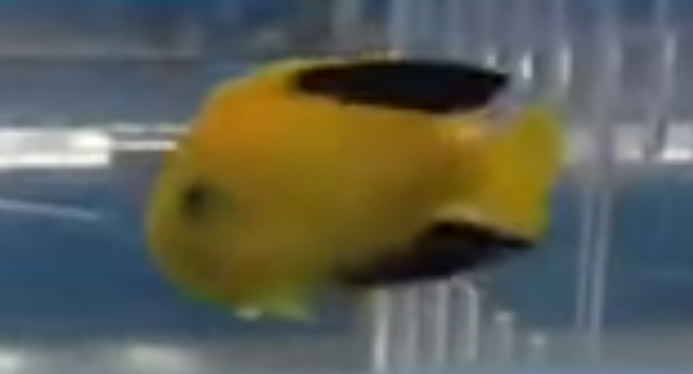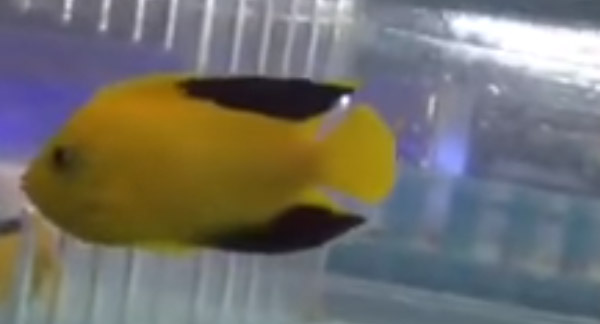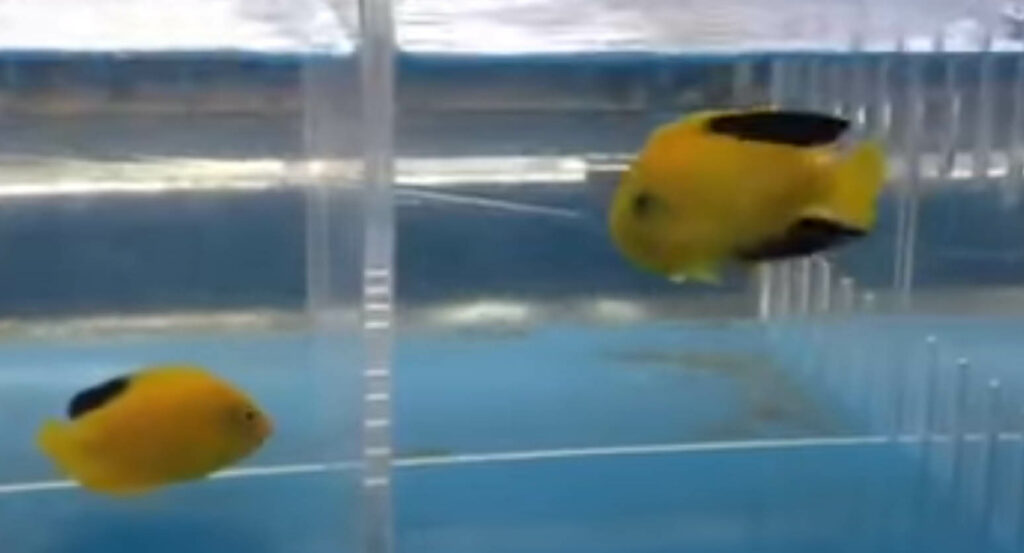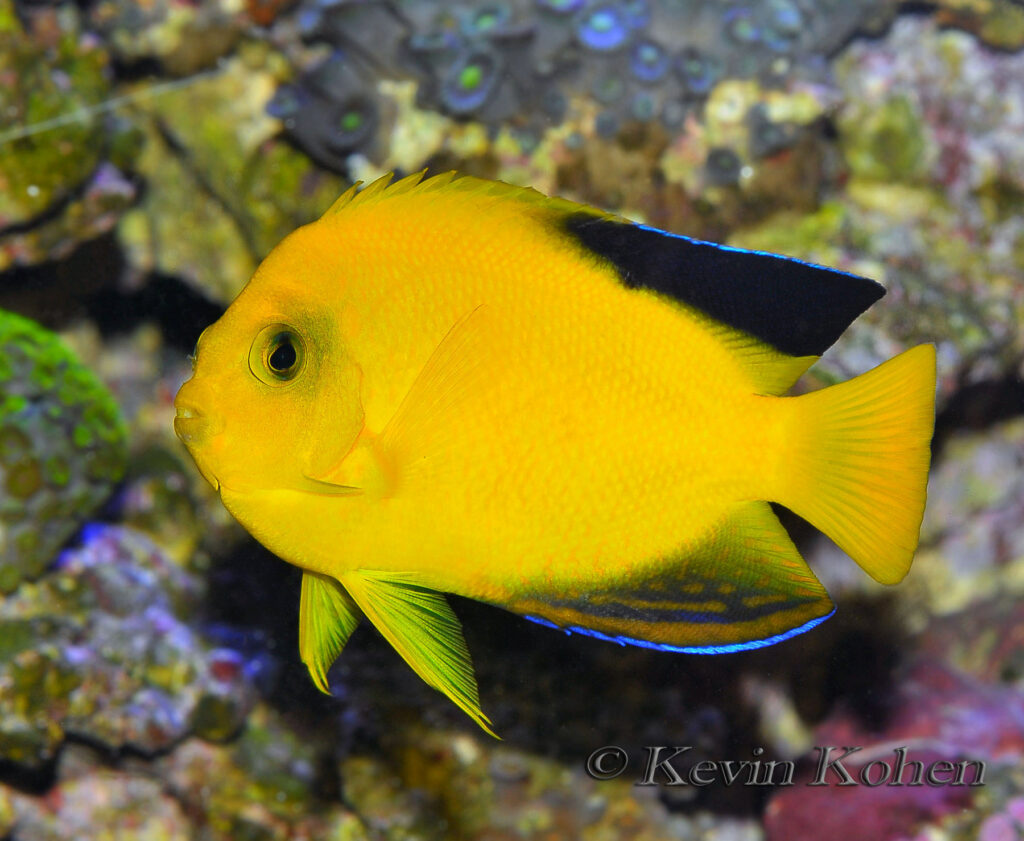
Sometimes a unique discovery slips by somewhat unnoticed, so a recent repost of a video Walt Smith International had us scrambling for more info. Pretty quickly the original publication date of 2012 was noticed, but even on further researching, it appears that this very attractive and large (for a pygmy) angelfish probably didn’t get the attention it deserved! Perhaps it was simply overshadowed at the time by the formal description of Centropyge deborae, named by authors Shen, Ho & Chang for Smith’s wife Deborah.
Says Walt Smith in early 2022: “There is renewed interest in classifying this fish we found several years ago as a new species. At first, there was some debate about this being a variant of Centropyge bicolor, but I have always found that hard to accept because of size, fin shape, and swim pattern being so different than any Centropyge in the group. Any comments out there agree or disagree? I am interested in other views.”

In terms of other views, this unusual color form of Centropyge was mentioned in a 2014 Reef Builders blog post by reef fish taxonomist Yi-Kai Tea (Lemon). At the time, Tea considered this type to simply be an extreme example of the color variation within Centropyge heraldi. In earlier times, specimens of C. heraldi with black dorsal fins, such as those seen in this video, were considered to be a distinct species, Centropyge wooheadi, but currently, they are simply synonymized and all are considered C. heraldi.

Given that there are also documented hybrids between Centropyge heraldi and the sympatric Bicolor Angelfish, Centropyge bicolor, one could also hypothesize that this unique specimen could have some C. bicolor genetics in its background. We know that the related species complex of Centropyge eibli, C. flavissima, and C. vrolikii, all freely hybridize in nature, and those hybrids are quite fertile, resulting in any number of subtle variations in forms that range between either parental species, or perhaps are even conglomeration of all three, which could explain some of the more unique individuals found in those populations. The interesting “double black Herald’s Angel” could be an example of ongoing genetic exchange between two species, and might not be as simple as a straight 50/50 mix in a first-generation hybridizing event.
Another possibility worth considering is that these specimens may represent a “supermale” type color pattern. Given that dwarf angelfishes are protogynous hermaphrodites, and may be found in harem situations in nature, one could guess that this very large angelfish with elongated, pointed fins is simply the pinnacle of male prowess among Fiji’s Centropyge heraldi population.

Walt Smith is certainly curious about these unique angelfish. When asked for further information, he shared that his divers had “… actually caught two of them back then. They were collected in an area that is very difficult for us to reach.” Smith hopes to revisit that area where these fish were encountered at some point in 2022, if conditions and available equipment allow for further exploration and collecting.
With no shortage of possible explanations, this will be an interesting question for investigation. We can all speculate while we await any word of new encounters, and whether researchers are able to come to any definitive answers.
Watch the video from 2021, and share your thoughts in the comments!




